
Other Uses of Rhynchosia Roots Other Than For Processing Traditional Fermented Beverages in Zambia
*Corresponding Author(s):
Sydney PhiriZambia Agriculture Research Institute (ZARI), Private Bag 7, Chilanga Zambi, Zambia
Email:nysydph@mail.com
Abstract
Rhynchosia roots commonly known as Munkoyo roots in Zambia are an important ingredient in the processing of cereal-based traditional fermented beverages called Munkoyo and Chibwantu. Rhynchosia roots supply amylase enzymes that hydrolyze gelatinized starch into fermentable sugars to facilitate spontaneous fermentation by lactic acid bacteria. Apart from processing Munkoyo and Chibwantu beverages, Rhynchosia roots have been used for other purposes in rural areas. A survey conducted in Kitwe, Chipata, Choma and Mumbwa revealed that sweet potatoes, wheat flour and sorghum malt are potential alternatives to provide amylase enzymes. Rhynchosia root extract is also used as traditional medicine to cure diarrhea, yellow fever and used as contraceptives. Breast feeding mothers with difficulties to produce breast milk use fermented Munkoyo and Chibwantu to induce lactation. This is because of biochemical changes that take place during fermentation. Chemical analysis of Rhynchosia root extract found Lycorenana, Anthracene, Phthalic acid, Xanthine, Quinoline, hydrocinnamic acid and Acetamide present as phytochemical compounds. In particular Xanthine, Quinoline and acetamide are known to have antibacterial effects. This may explain why Rhynchosia root extract has been used as traditional medicine.
Keywords
Chibwantu; Galactagogues; Medicine; Munkoyo; Rhynchosia roots
Introduction
Rhynchosia plant species are wild shrubs that grow in rocky- mountainous regions of Southern Africa. The Rhynchosia plant species are endemic to Zambia, the Democratic Republic of Congo, Zimbabwe, Angola, Tanzania, Malawi, Namibia, Botswana and Mozambique [1]. They are also a native dominant shrub in the region between Lake Tanganyika and Lake Mweru [2]. There are different species within Rhynchosia genus [3]. Rhynchosia heterophylla specie in particular is an erect perennial plant producing a cluster of woody stems growing from a stout woody root stock [4]. This specie is harvested particularly for its root that is an important ingredient in processing popular non-alcoholic beverages in Zambia known as Munkoyo and Chibwantu [5].
Munkoyo and Chibwantu beverages are processed by cooking maize meal porridge until gelatinization. When the porridge cools to temperatures below 50oC, Rhynchosia roots are added to the porridge. The Rhynchosia root contains amylase enzymes that hydrolyzes the gelatinized starch into fermentable sugars like glucose, maltose and maltotrioes [6,7]. The availability of these fermentable sugars facilitates spontaneous fermentation by lactic acid bacteria to produce Munkoyo and Chibwantu beverages [8].
Other than processing Munkoyo and Chibwantu beverages, the Rhynchosia root extract have also been utilized for other purposes. In rural villages, Munkoyo and Chibwantu beverages are used for maternal health intervention to induce lactation to mothers who have difficulties producing breast milk. In other rural communities the Rhynchosia root extract is traditional medicine for diarrhea and yellow fever, whilst other women use the same extract as contraceptives [9].
Despite all these fore-mentioned beneficial applications of Rhynchosia root extract, no scientific research has been done to verify these reports. This research thus carried out a survey involving local traders of Rhynchosia roots, processors and consumers of Munkoyo and Chibwantu beverages, specifically to know other uses of Rhynchosia roots other than as an ingredient in the processing of Munkoyo and Chibwantu Beverages.
Methodology
Baseline survey
A baseline survey was conducted in Zambia in the Copperbelt Province (Kitwe), Eastern Province (Chipata), Southern Province (Choma) and Central Province (Mumbwa). Figure 1 is the map of Zambia showing the towns where the survey was conducted.
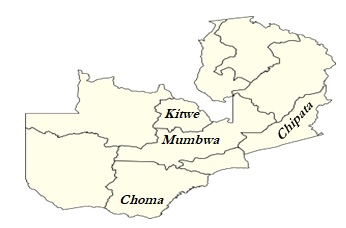 Figure 1: Map of Zambia and the sites of baseline survey [10].
Figure 1: Map of Zambia and the sites of baseline survey [10].
The survey targeted traders of Rhynchosia roots and processors of Munkoyo and Chibwantu in these towns. During the survey, questionnaires were administered and samples of different types of Munkoyo roots were collected for processing of Munkoyo samples for laboratory analysis.
The questionnaires investigated different types of Rhynchosia roots used in the processing of Munkoyo and Chibwantu, possible alternatives to Rhynchosia roots for processing Munkoyo and Chibwantu, medicinal application of Rhynchosia roots and traditional use of Munkoyo and Chibwantu beverages as galactagogues for maternal health benefits for breast feeding mothers. Between 40 and 50 questionnaires were administered to each of the four (4) towns coming to a total of 187 questionnaires together. The data obtained from the questionnaires was analyzed using (Statistical Package for Social Sciences (SPSS) to determine the significant differences in the response of the respondents on the other uses of Rhynchosia root other than for processing Munkoyo and Chibwantu beverages.
Sample collection
Samples of Rhynchosia roots were bought from the traders and processors after responding to the questionnaires in the fore mentioned towns. The target was to obtain as many different types of yellow and white Rhynchosia roots as possible for spontaneous fermentation of Munkoyo, analysis of pH, Titratable acidity and determining Phytochemicals found in Rhynchosia root extract. A total of 60 yellow and white Rhynchosia roots were collected from the 4 towns for laboratory analysis.
Sample preparation
A bunch of Rhynchosia roots weighing approximately 50g were soaked in ten (10) different clean jar cups with 2L of water for 24 hours to allow complete extraction of all possible water-soluble chemical compounds and enzymes.
Approximately 1.5L of porridge at warm temperature (45oC-55oC) was added in ten (10) calabashes and added 500ml of Rhynchosia root extract previously soaked for 24 hrs. Stirred the mixture of the porridge and then added the extract and left it to ferment for 72 hrs. Samples of Rhynchosia root extract and Munkoyo which was fermented for 72 hours were collected for analysis in the Laboratory.
Laboratory analysis
Ten (10) samples of Rhynchosia root extract previously soaked in the jar cups and another ten (10) samples of Munkoyo samples fermented for 72hrs were taken to University of Zambia, Department of Food Science and Nutrition for analysis of pH and Titratable acidity. Titratable acidity was determined by titrating 10 cm3 of the samples against sodium hydroxide with phenolphthalein as an indicator [11].
Two (2) samples of white root extract and two (2) other samples of yellow root extract selected at random from the ten (10) roots earlier soaked in the jar cups were taken to Zambia Bureau of Standards (ZABS), for analysis of phytochemicals in Rhynchosia root extract. Using Gas Chromatography - Mass Spectrometry (GC-MS), the phytochemicals in the roots were analyzed as follows;
30ml of sample was collected and placed into a separating funnel to which 20 ml of ethyl acetate was added to extract the molecules of interest. Organic phase was collected in a flask to which 5g of sodium sulphate was added. The extraction of the sample was repeated with two portions of ethyl acetate, organic phase was added to the earlier collection. The organic phase was filtered and filtrate collected. The filtrate was then concentrated on Rotary Evaporator to about 2ml, transferred into a glass vial. The glass vial was then taken for analysis on a GC-MS Column temperature was set at 500C; injection temperature was set at 2500C, with a split less Injection Mode with a sampling time of 1 minute. Flow Control Mode was linear velocity. Pressure set at 88.0 Kpa. Total Flow was 11.0 ml/minute. Column flow was 1.50ml/minute. Linear velocity was 44.4 cm/second. Purge flow set at 3.0. Slit Ratio was -1.0 Temperature programming: 500C ramped to 1500C at 20C with holding time of 10 minutes. After which ramped at 40C to 3000C held for 1minute. Type of column used: TR-50M, thickness 0.25um, length 30.0m and diameter 0.25mm (2.5um). Ion Source was set at 2200C. Interface Temp – 2800C. Solvent cut time at 2 minutes Start mz at 40mz, End mz at 480.
Results And Discussion
Analysis of the 187 questionnaires administered in the four towns revealed Four (4) different alternatives to Rhynchosia roots for processing Munkoyo and Chibwantu beverages. The commonly used are the sweet potatoes in the Southern Province (Choma) about 10%, compared to the least used in Kitwe less than 5%. On the other hand, Sorghum malt is commonly used in Copperbelt Province (Kitwe) about 40% compared to least used in Southern Province (Choma) less than 4% as indicated in figure 2.
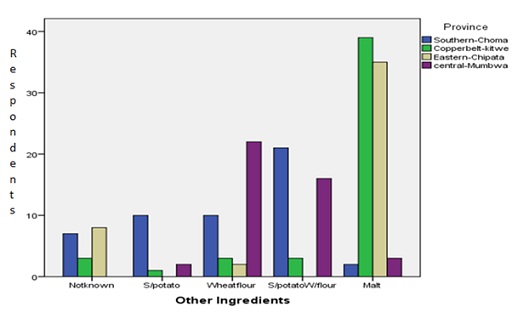 Figure 2: Alternative to Rhynchosia roots as ingredients in the processing of Munkoyo.
Figure 2: Alternative to Rhynchosia roots as ingredients in the processing of Munkoyo.
This result shows that sweet potatoes, wheat flour or malt are potential alternatives to Rhynchosia roots for processing Munkoyo and Chibwantu. Incorporation of selected strains of lactic acid bacteria to these alternatives to Rhynchosia roots can result into controlled and desirable fermentation of processing Munkoyo and Chibwantu rather than spontaneous fermentation.
Other than as an ingredient in the processing of Munkoyo and Chibwantu beverages, Rhynchosia root extract is also used as medicine. All the towns where the research was been done expressed knowledge of using the Rhynchosia root or its extract as medicine with Copperbelt and Eastern Provinces recording the highest frequency of 33% each and Southern Province (Choma) and Central Province (Mumbwa) with the least frequency of 19% and 15% respectively. Munkoyo and Chibwantu beverages on the other hand are occasionally used for maternal health intervention to induce lactation to breast feeding mothers in Southern and Central Provinces as depicted in figure 3.
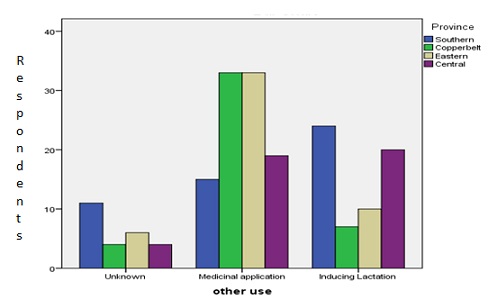 Figure 3: Medicinal application of Rhynchosia root and Munkoyo beverage used to induce lactation.
Figure 3: Medicinal application of Rhynchosia root and Munkoyo beverage used to induce lactation.
Diseases identified to be cured by Rhynchosia root extract include diarrhea, yellow fever and used as contraceptives as shown in figure 4.
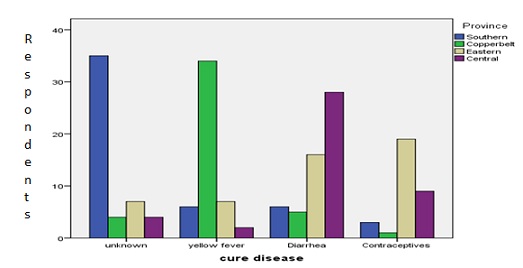 Figure 4: Disease cured by Rhynchosia root extract are yellow fever, diarrhea and as contraceptives.
Figure 4: Disease cured by Rhynchosia root extract are yellow fever, diarrhea and as contraceptives.
Southern Province recorded low knowledge of Rhynchosia root extract as traditional medicine or contraceptives, whilst Copperbelt province frequently use the Rhynchosia root extract to cure yellow fever, Central province uses the roots to cure diarrhea and Eastern province use the roots as contraceptives.
There are two types of Rhynchosia roots that are distinguished by their appearance and color. The yellow Rhynchosia roots is common in the Copperbelt Provinces used for processing Munkoyo beverage and the white Rhynchosia root for processing Chibwantu beverage as shown in figure 5.
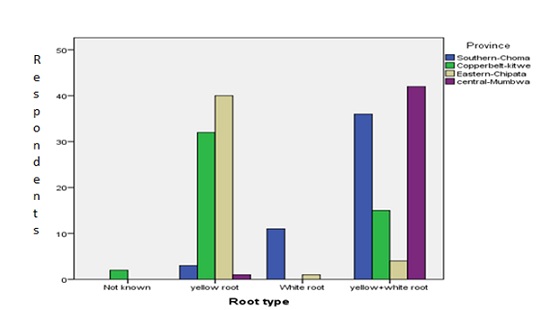 Figure 5: The most common Rhynchosia roots are the yellow and white Rhynchosia roots.
Figure 5: The most common Rhynchosia roots are the yellow and white Rhynchosia roots.
The white Rhynchosia roots are geographically abundant in the Southern and Central provinces, whilst the yellow Rhynchosia roots are common in Copperbelt and Eastern provinces.
The pH and corresponding titratable acidity of Rhynchosia root extract produced non-uniform but slightly acidic pH range fluctuating around 5.5 and titratable acidity around 0.1%.
This is possibly due to an inherent pH or titratable acidity characteristic of Rhynchosia roots fostered by the climatic or environmental conditions in which the Rhynchosia plant grows [12]. However, the pH range and titratable acidity of Munkoyo beverages were uniform around 3.5 and 0.85% respectively, produced by the accumulation of lactic acid during fermentation as shown in figure 6.
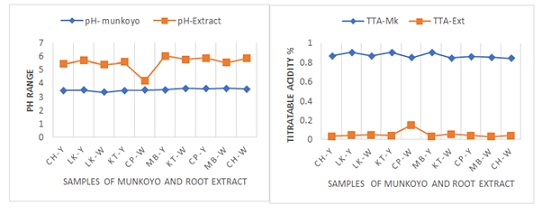 Figure 6: pH ranges and Titratable acidity of Munkoyo beverage and the Rhynchosia root extract.
Figure 6: pH ranges and Titratable acidity of Munkoyo beverage and the Rhynchosia root extract.
A statistical analysis of the pH range and titratable acidity of fermented Munkoyo beverages against Rhynchosia root extract was significantly different with a p-value of 0.01.
Gas Chromatography – Mass Spectrometry (GC-MS) analysis of phytochemicals in the white and yellow Rhynchosia root extract, identified seven (7) different phytochemicals as indicated in Table 1 below.
|
Phytochemicals |
CH-W-Tl-38437/1 |
MB-W-Tl-38437/2 |
CP-Y-Tl-38437/3 |
KT-Y-Tl-38437/4 |
|
Lycorenana |
√ |
x |
x |
x |
|
Anthracene |
√ |
x |
x |
x |
|
Phthalic acid |
√ |
√ |
√ |
√ |
|
Xanthine |
x |
x |
√ |
√ |
|
Quinoline |
x |
x |
√ |
√ |
|
Hydrocinnamic acid |
x |
√ |
√ |
√ |
|
Acetamide |
x |
x |
√ |
√ |
Table 1: Phytochemicals present in the white and yellow Rhynchosia roots.
The yellow Rhynchosia root extract from the Copperbelt Province (Kitwe-KT -Y-TI-38437/4) contained Xanthine, Quinoline and Acetamine except the white Rhynchosia root extract from the Southern Province (Choma- CH-W-TI-38437/1) which contained Lycorenana and Anthracene only.
The venn diagram in figure 7 gives a summary of distribution of the phytochemicals present in yellow Rhynchosia root extract abundant in Kitwe and white Rhynchosia root extract abundant in Choma, with Phlthalic acid found in all the root extracts including Mumbwa (MB-W-Tl-38437/2) and Chipata (CP-Y-Tl-38437/3).
 Figure 7: Venn diagram showing the distribution of phytochemicals found in white and yellow Rhynchosia root.
Figure 7: Venn diagram showing the distribution of phytochemicals found in white and yellow Rhynchosia root.
Discussion
Rhynchosia plant is a wild native shrub that has not been domesticated but known to be endemic to Southern Africa and the region around Lake Tanganyika and Lake Mweru [13]. This root has not been domesticated yet. This implies that continuous harvest of Rhynchosia root for processing cereal-based beverages or medicinal application is leading to the extinction of Rhynchosia root species. Thus, the potential for sweet potatoes, malt and wheat flour to be used as alternatives to Rhynchosia roots for processing cereal-based beverages is worthy further studies.
Generally, the yellow Rhynchosia root is used for processing Munkoyo in the Eastern Province (Chipata) and Central Province (Mumbwa), whilst the white Rhynchosia roots are mostly used to process Chibwantu in the Southern Province (Choma).
Yellow Rhynchosia root is basically named after deep yellow extract it produces when soaked in water. The deep yellow extract is as a result of the Phenolic, flavonoids and iso- flavonoid compounds abundant in yellow Rhynchosia roots than in white Rhynchosia roots [12]. In this research the yellow Rhynchosia root extract contained Xanthine, Quinoline and Acetamide. These compounds are known to have antioxidants and anti-inflammatory effects. For example Quinoline and Acetamide derivative compounds like N-(1-oxo-3,4-dihydropyrazino[1,2-a] indo-1-(2H)-yl-quinoline-8-sulfonamide and N-(3,4-dihydro-1-oxopyrazino[1,2-a]indo(-1(2H)-yl-2-morpholinoacetamide exhibit antibacterial activity against E.coli, P.aeruginosa, Staphylococus aureas and S. Pyogenes strains [14]. Xanthine on the other hand as a compound in medicinal plants, exists in various forms as caffeine, theophylline, theobromine in coffee, tea or cocoa. Xanthine has diverse pharmaceutical applications as Cyclic nucleotide, Phosphodiesterase inhibition, antagonizing adenosine receptor, anti-inflamatory, anti- microbial, anti-oxidant and anti- tumor activity [13]. This may explain why the extract of yellow Rhynchosia root is commonly used as medicine in the Copperbelt Province (Kitwe), Central Province (Mumbwa) and Eastern Province (Chipata) to cure yellow fever, diarrhea or used as contraceptives respectively.
Interesting to note that Southern Province (Choma), where white Rhynchosia roots are geographically abundant show low preference of using Rhynchosia root as medicine. The white Rhynchosia root extract exclusively contained Lycorenana and Anthracene which has no researched medicinal application. This too explains why the white Rhynchosia root is not utilized as traditional medicine compared to the yellow Rhynchosia root.
Munkoyo and Chibwantu beverages on the other hand are commonly used for maternal health intervention in Choma. Munkoyo and Chibwantu beverages are known to induce lactation, hence known as galactogogues. Galactogogues are synthetic or plant molecules used to induce, maintain and increase milk production both in human clinical condition and production of milk in the animal dairy industry [14]. Mothers with challenges with breast feeding their young ones are administered Munkoyo or Chibwantu to induce lactation. This has been helpful to those who are resource marginalized in villages or cannot afford conventional medication to induce lactation.
Conclusion
Munkoyo and Chibwantu are popularly processed as social beverages to provide energy. However, in rural communities the beverages are also used as maternal health beverage (galactogogues). Equally, Rhynchosia root and its extract is a very important ingredient in the processing of Munkoyo and Chibwantu but also used as traditional medicine to cure yellow fever, diarrhea and as contraceptives. None domestication of Rhynchosia root thus far pose a threat of quick extinction although identified alternatives to Rhynchosia roots to process Munkoyo beverage (Malt, wheat flour) or Chibwantu beverages (Sweet potatoes) will be good for further research. This research has further given insight to other uses of Munkoyo and Chibwantu as health beverages whilst Rhynchosia root and its extract for further research as traditional medicinal application.
Acknowledgements
National Science and Technology Council (NSTC) – Funding the project
Zambia Agriculture Research Institute (ZARI)- Implementing the project
National Technology Business Center (NTBC)- Project partner
University of Zambia (UNZA) – Project Partner
References
- Foma R, Kayisu DJ, Thonart KP (2013) Munkoyo: Des racines comme sources potentielles en enzymes amylolytiques et une boisson fermentée traditionnelle (synthèse bibliographique). Biotechnologie Agronomie Societe at Environment 17: 352-363.
- Pauwels L, MP, Ngoy K, Delaude C (1992) Eminia, Rhynchosia et Vigna (Fabacées) à? complexes amylolytiques employés dans la région Zambésienne pour la fabrication de la bière 'Munkoyo'. Belgian Journal of Botany 125: 41-60.
- Zulu R, Grayer JR, Ingham L, Harborne B, Eagles J (1994) Flavonoids from the roots of two Rhynchosia species used in the preparation of a Zambian beverage. Journal of the Science of Food and Agriculture 65: 347-354.
- Fern K (2022) theferns.info. Tropical Plants Database.
- Zulu R, DM, Owens D (1997) Munkoyo beverage, a traditional Zambian fermented maize gruel using Rhynchosia root as amylase source. International Journal of Food Microbiology 34: 249-258.
- Phiri S, den HV, Smid E, Shindano J, Linnemann A (2019) Fermented cereal-based Munkoyo beverage: Processing practices, microbial diversity and aroma compounds.PloS one 14: 22350.
- Moonga B, Phiri S, Schoustra J, Chileshe T, Chirwa J, et al. (2020) The Munkoyo root: Traditional uses, Biochemistry, Fermentation and potential cultivation. American Chemical Society 3: 81-99.
- Phiri S, Schoustra SE, Van den Heuvel J, Smid E, Shindano J, et al. ( 2020) How processing methods affect the microbial community composition in cereal-based fermented beverage. LWT 128: 109451.
- Rosalle E (2015) Milking the information: Resources on herbal lactation aids. 19, Journal of Consumer Health on the Internet 2: 93-99.
- Matela KS, Pillai MK, Thamae T (2019) Evaluation of pH, titratable acidity, syneresis and sensory profiles of some yogurt samples from the Kingdom of Lesotho. Food research international 3: 693-697.
- Zang Y, Wu W, Lui H (2019) Factors affecting variations of soil pH in different horizins in hilly regions. PloS one 14: e0218563.
- Toche RB, Janrao RA (2015) Synthesis characterization and antimicrobial evaluation of novel urea, sulfonamide and acetamide 3-4-dihydropyrazino(1,2-a) indol-1(2H)-one derivatives. Arabian Journal of Chemistry 12: 3406-3416.
- Nivedita Sigh AKS, Thakur MS, Patra S (2018) Xanthine Scaffold: Scope and potential in drug development. Heliyon 4: e00829.
- Felipe TJB, Zulma R (2014) Pharcological overview of Galactogogues. Veterrinary Medicine International 20.
Citation: Phiri S, Kasase C, Miyoba N, Ng’ona E (2022) Other Uses of Rhynchosia Roots Other Than For Processing Traditional Fermented Beverages in Zambia. J Food Sci Nutr 8: 149.
Copyright: © 2023 Sydney Phiri, et al. This is an open-access article distributed under the terms of the Creative Commons Attribution License, which permits unrestricted use, distribution, and reproduction in any medium, provided the original author and source are credited.

